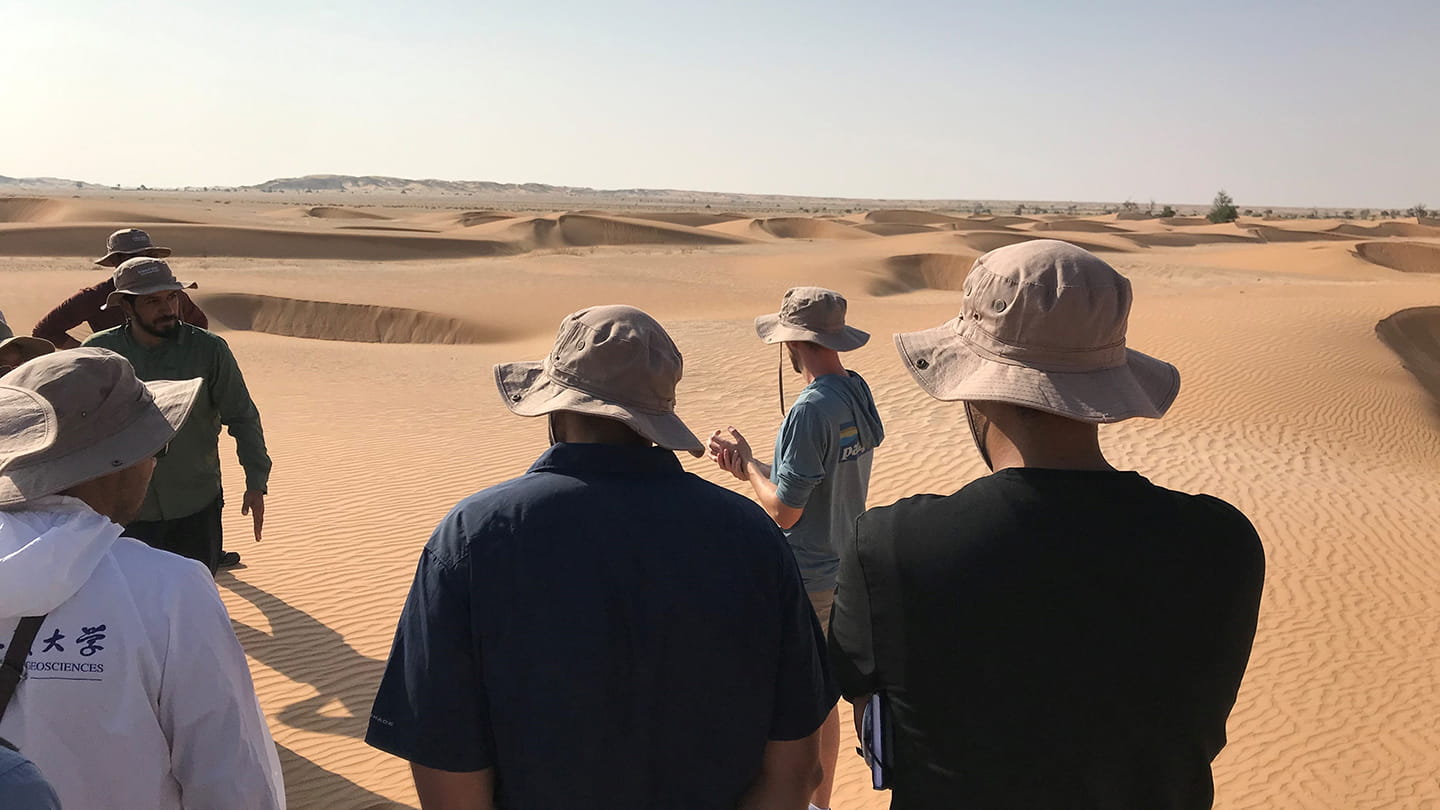Trilateral geology field seminar facilitated by Aramco geologists

Geologists from Aramco, KFUPM, and Stanford University examine sand-rich, shallow marine deposits of the Cambrian Amin Formation in Wadi Sumaynah, Oman.
Geologists from Saudi Aramco and Aramco Americas conducted a joint field seminar late November in Oman for geology students and faculty from King Fahd University of Petroleum and Minerals (KFUPM) and Stanford University.
The field seminar included studies of the petroleum systems and related geology of Oman in a wide variety of environmental settings of various geologic ages. Oman is noteworthy for excellent exposures of modern and ancient outcrops of complex geology and reservoir analogs relevant to Aramco operations.
Facilitated by Gretchen Gillis of Aramco Americas Upstream Technical Support Division, the group of 30 gained hands-on experience in a wide variety of geological settings while fostering ongoing collaboration between the company and the two universities.

Geologists from Aramco, KFUPM, and Stanford University discuss sedimentation and reservoir properties of barchan dunes. These observations are important to understanding Earth as well as the history and habitability of other planets.
On the first full day in the field, a team exercise focused on the effects of glaciation on sedimentation. Teams – composed of students, faculty, and professionals – spent time examining portions of a large outcrop of the Khufai and Al Khlata Formations before the group walked the entire outcrop and share interpretations.
On subsequent days, the group interpreted spectacular geology from Precambrian stromatolites – primitive microorganisms that can form excellent hydrocarbon reservoirs – to a modern sabkha at Bar Al Hikman. Thanks to the participation of experts in carbonate and clastic sediments, earth history and paleobiology, and petroleum geology, and guided by retired Aramco Americas geologist Tim Diggs, every stop provided excellent experiential learning for all involved.
On the final field day, the group safely completed an arduous hike to study a world-famous exposure of the Semail Ophiolite in Wadi al Abyad, where the boundary between the Earth's crust and the mantle – known as the Moho – is exposed.
The group learned about Middle Eastern culture through conversations between natives of Saudi Arabia and participants from Egypt, France, India, Indonesia, Pakistan, Sudan, Turkey, the USA, and Yemen. This was the sixth Aramco-KFUPM-Stanford University trilateral geology field seminar facilitated by Aramco Americas.



